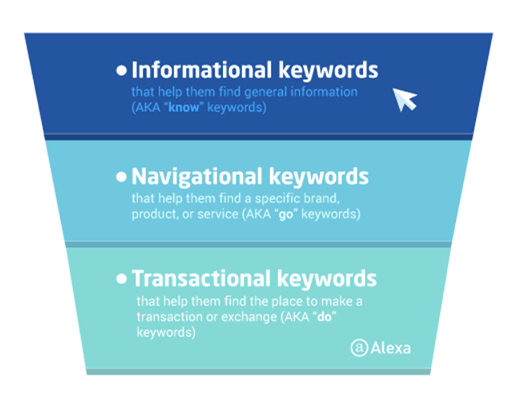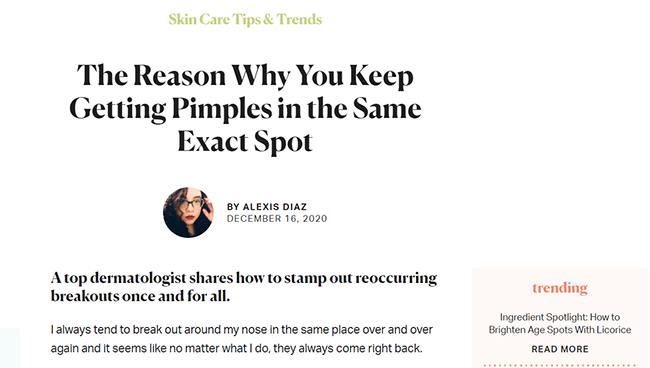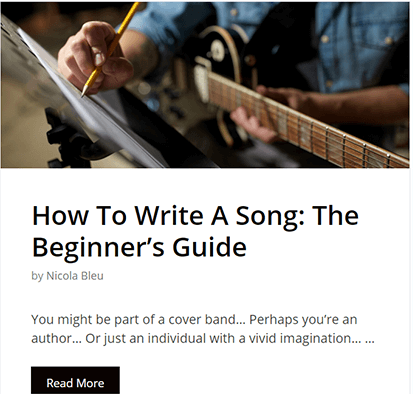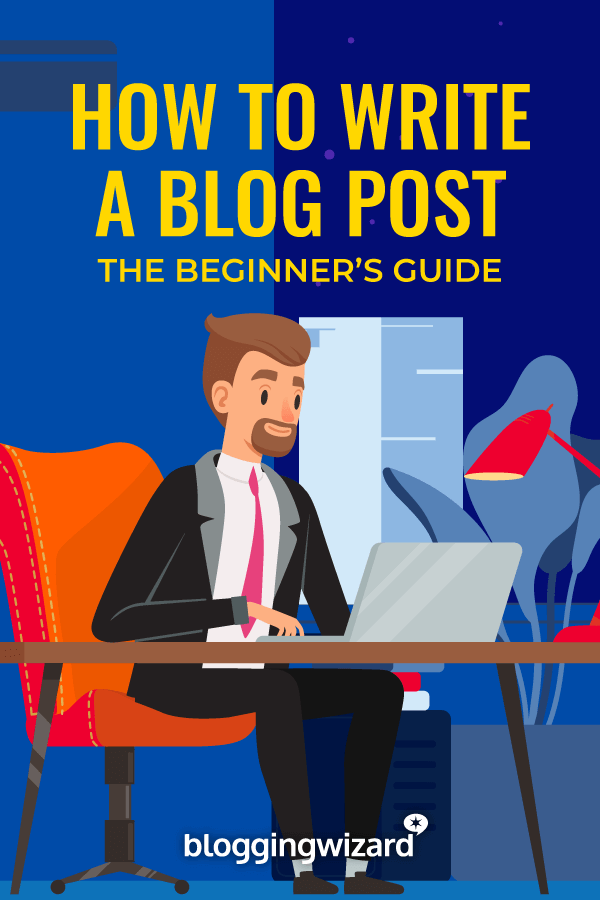How To Write A Blog Post That Converts: The Beginner’s Guide

When it comes to creating blog posts, a lot of marketers get hung up on the SEO side of things. They’re so focused on traffic and writing their way to the top of the SERPs, that they forget to think about the most important thing: conversions.
But guess what? Traffic means nothing if it isn’t converting into paying customers.
You could have thousands of people clicking on your blog posts each week, but if you’re not getting them to take action once they’re there, all your efforts will have been in vain.
That’s why in this post, we’re not going to just be showing you how to write a blog post that ranks – we’re going to be showing you how to write a blog post that converts.
The tips below will show you exactly how to write a blog post that drives real customer action. We’ll be walking you step-by-step through the whole process, from ideation right the way through to editing and publishing.
All you have to do is follow these tried-and-tested techniques and you’ll end up with a super-compelling blog post that converts like crazy.
Ready? Let’s get started.
1. Choose the right topics/keywords
The number one reason blogs fail to convert isn’t because of the quality of the content, it’s because they’re not writing about the right topics.
That’s why step number one is arguably the most important part of the whole process. You need to think very carefully about the topics you want to write about and the keywords you want to target.
A high-converting blog topic does two things:
- Targets the right kind of keyword (don’t worry, we’ll get to what this is in a moment)
- Offers a solution to a customer problem
If you want to write a blog post that converts, you’ll need to make sure you’re hitting both of these points. Here’s how:
Finding juicy, high-converting keywords
We have written about the basics of keyword research extensively here at Blogging Wizard.
If you are new to the topic, I highly recommend you check out our keyword research basics guide. And our roundup of keyword research software.
For the purposes of this post, I want to focus on a crucial part of the keyword research process that most bloggers overlook: search intent.
Evaluating search intent is the most important part of the keyword research process if you’re aiming for conversions. Why? Because some keywords are inherently more likely to lead to conversions than others.
Customers move along a buying cycle before they make a purchase. The buying cycle typically looks something like this:
- At the start of the customer journey, they figure out what it is they need.
- Next, they might look for a solution that meets their needs by doing some initial research.
- After that, they’ll do some final research (maybe they’ll compare different products that offer a solution, look at reviews, or try to find the best deal).
- Then, and only then, will they be ready to hit the buy button.
At each stage of the journey, they’ll search for different kinds of keywords:
- Informational keywords help customers to figure out what it is they need to solve their problem in the early stages of the buying cycle. (Examples: ‘how-to’, ‘tips’, ‘best’ and ‘guide’ keywords.)
- Navigational keywords help them to find information about specific products, services, and brands during the research stage, or to find their way to a specific website/store. (Examples: ‘review’, ‘website’, ‘app’, ‘store’, ‘[brand name]’)
- Transactional keywords help them to find a place to make their purchase. They’re used right at the bottom of the buying cycle when the customer is ready to buy. (Examples: ‘buy’, ‘deal’, ‘discount’.)

All of the above keyword categories are fair game as they’re all targeting customers that are already in the buying cycle but, the further down, the better.
Example
To provide a little more context, let’s look at a real-world example. Imagine you’re running an online vegan meal delivery service and creating blog posts as part of your inbound marketing strategy. You’ve identified three low-competition keywords in the ‘vegan’ niche that you might want to target:
- Famous vegans in history
- How to make vegan pasta sauce
- Best website to buy vegan food
Which one do you think is the least likely to lead to conversions? Bingo – number one.
Why? Because the search intent for that keyword suggests that the customer isn’t really in the buying cycle for vegan products. Keyword #2, on the other hand, is a relevant informational keyword that might be worth targeting, and #3 has the greatest commercial intent.
Solve a problem for your customer
The best blog topics for driving conversions are those that address a customer’s pain point. A pain point can be anything your ideal customer is struggling with, like:
- Losing weight
- Making more money
- Fixing their washing machine
The reason these kinds of topics convert so well is that the readers that are looking for a solution to a problem are more likely to be willing to pay for that solution.
The trick is to make sure you’re not completely solving their problem within the post. Give them an answer to their query, but leave room for further assistance if they take action.
Here’s a great example from the K-beauty blog the Klog:

They identified a pain point for their target customers (recurrent pimples in the same spot) and wrote a blog about how to solve the problem. But crucially, they also gave their reader a reason to take further action by recommending some of their own skincare products that could help treat the problem.

2. Start with a great headline
Once you know what you’re writing about, it’s time to come up with a great headline. A good headline will do three things:
- Give you a better chance of ranking for your target keyword
- Attract the most clicks in the search results
- Captivate your readers right off the bat so that they’re more likely to keep reading and take action
All of which are essential if you want to write a blog post that bags you the most conversions.
The process of crafting a headline is a balancing act between SEO and clickability. The goal is to create something that ranks, stands out from your competitors, and encourages your reader to both click and keep reading right until the end.
Your need to craft a headline that entices your readers’ curiosity; it should be compelling and include your target keyword. It should include powerful adjectives, address your reader’s pain point and offer them a solution.
The kind of headline you use will depend on the topic you’re writing for. Here are a few common high-converting headline formulas and when/why you might want to use them:
The how-to headline
The classic how-to headline is simple and effective. The reason it works so well is that it promises a solution to your reader’s problem right there in the header.

The numbered list
See that number in the headline of this post? That’s not there by coincidence. There’s a lot of data to suggest that headlines that include numbers generate more clicks and social shares than those that don’t.

The lessons-learned headline
Lessons-learned headlines give your headlines a personal touch. They help engender trust by showing your reader that you’ve learned from experience.

The personal-experience headline
Similar to the above, personal-experience headlines promise the reader a solution to their problem based on your own experience.

The question headline
Question headlines are great because they show your reader you understand the problem, but without giving away any answers – they have to click through for that.

The negative headline
According to research by Outbrain, headlines that feature negative superlatives outperform those that feature positive superlatives when it comes to user engagement and clicks.

A good way to get an idea of what kind of headline your audience wants to click is to see what’s already ranking. Search for your target keyword: what does the front page look like? Are there any clear trends? How could you stand out from what’s already there?
Bonus tip: Use tools like Sharethrough’s Headline Analyzer to evaluate your headlines before you settle on them and find ways to improve. Sumo’s headline generator is great for coming up with headline ideas too. I’d also recommend A/B testing different headlines to see which one performs best.
3. Hook them right at the beginning
Did you know that 55% of blog post readers stay on the page for less than 15 seconds? Yep, 15 seconds – that’s how long you have to grab their attention.
15 seconds isn’t enough time to do anything, let alone convince them to sign up to your newsletter or make a purchase. If they bounce off your page straight away, they won’t even get far enough to see your CTA. So what do you do?
Simple: you grab their attention and you don’t let go.
You hook them in that first 15 seconds so that they have no choice but to keep reading. And once you’ve got them hooked, you keep them engaged so that they stick around long enough for you to build a relationship and convince them to take action.
That’s why you need to make sure the opening to your blog post is as compelling as possible. Don’t make the amateur mistake of being dry or academic in your opening paragraph. Be exciting and captivating. Reel them in and give them a reason to keep reading by hinting at what’s to come.
Here are some powerful ways to achieve this:
Use bucket brigades
Bucket brigades are ‘bridge phrases’ originally used in copywriting that encourages the reader to keep reading. I’m talking about phrases like:
- Here’s the deal:
- Now:
- Fun fact:
- And the best part?
- But guess what?
- But here’s the kicker:
The reason they work is that they hint at what’s about to come next; the reader has to keep reading to find out what that is.
Use bucket brigades in your opening or wherever you think your readers might be tempted to hit the back button to give them a reason to stick around.
The ‘APP’ Method
APP stands for Agree, Promise, and Preview. It’s a formula for crafting attention-grabbing openings that really hook your readers in.
First, you state something that the searcher will agree with to show you understand the problem they’re facing. Next, you promise to solve that problem. And finally, you give them a sneak-peak of what’s to come by outlining exactly what you’re going to cover.
Tell them why they need to stay tuned
This technique seems pretty simple, but for some reason, few bloggers seem to utilize it. All you have to do is tell your reader why they need to keep reading to the end. Just like this:
- “Make sure you stay tuned because, at the end of this blog, we’re going to be revealing some secret _______”
- “And for all you avid readers, we’ve got a special surprise in store. At the end of this blog post, we’re going to be revealing something extra special.”
- “Oh, and I forgot the best part: we’re also going to be incredible bonus tips at the end – so make sure you stick around for that.”
Start with a question
Questions demand answers. That’s why so many smart bloggers kick off their post with a question – it hooks the reader in. They have to keep reading if they want the answer.
4. Write great content
The rest of your content should be every bit as good as your intro.
The goal is to engender trust and build a relationship with your reader as they read so that, by the time you hit them with a CTA, they’re ready to convert. And the better your content is, the more likely you are to grab their trust.
If you can show your readers that you’re an expert on the topic you’re writing about as they read, they’ll be more likely to trust you enough to take the plunge and hit the buy button, sign up for your newsletter, or whatever else it is you’re trying to get them to do.
Here are some essential tips for writing great content:
Use persuasive devices
Let me introduce you to the three modes of persuasion: pathos, logos, and ethos. They appeal to emotion, logic, and trust.
These are the three core pillars of persuasion that convince readers to take action. If you want to create a blog post that converts, you need to target all three.
Appeal to emotion by making sure your content uses language that evokes your audience’s emotions. Appeal to their sense of urgency by using short sentences and urgent language.
Appeal to trust by being personable throughout your content. Address your reader directly, write in first- and second-person, and inject a little personality into your content. Don’t be afraid to use humor and show your audience that you’re human.
And appeal to logic by making sure you sound like an expert in the topic you’re writing about. Do your research and write the best, most informative, accurate, and comprehensive blog post on the topic.
Don’t be sales-y
The goal of your blog post is to drive conversions, but your readers shouldn’t know that.
The thing is: customers just don’t trust self-promotional content. According to a Kentico survey, consumers generally trust content marketing material, but the second you try to push a sale, that trust plummets.
In fact, just signing off an objective blog post with a product pitch sends the credibility level down by almost 30%.
The question, then, is how do you drive conversions without being self-promotional?
The keyword here is moderation. The main point of your blog post should be to solve your customers’ problems and provide them with information. The ‘selling’ part shouldn’t take up a significant amount of space. Ideally, your audience won’t notice you’re trying to convince them of something at all.
Write for your audience
Think carefully about who your audience is before you start writing and make sure you’re using language that appeals directly to them. For example, if your blog is targeting CEOs, you’re not going to be using the same language as if you were writing for stay-at-home mums, for instance.
The more targeted your content is for your audience, the more likely it is to drive conversions.
5. Include testimonials
Social proof is powerful. Studies show that users who see user-generated content are much more likely to convert than those that don’t. In fact, user-generated content has been shown to boost conversion rates by 161%, on average.
The upshot of this is clear: you should absolutely be including written testimonials within your blog posts if appropriate. Try to incorporate them into your blog post wherever it feels natural – don’t just randomly insert them across the page.
The more social proof you can feed them while they’re reading, the more likely they’ll be to convert when you hit them with your CTA, speaking of which…
6. Your CTA is everything
Your call-to-action is probably the single most important element on your blog post page in terms of impact on your conversion rate. Your CTA is how you encourage the reader to do what you want them to do, whether that’s to follow you on social media, share the content with their friends, join your newsletter, or buy something.
Your CTAs need to be clear, visible but unobtrusive, and at least a little bit pushy (just don’t overdo it).
There are different ways you can insert your CTAs in your content, like banners, pop-up lead collection forms, anchor text… you get the idea.
Don’t feel like you have to just stick with one. In fact, I’d urge you to include several CTAs in each of your blog posts to give your readers the maximum number of opportunities to convert.
Here’s an example from Coffee Blog. As you can see below, an unobtrusive slide-in CTA designed to collect leads appears as you’re reading the content:

You’re then hit with another larger CTA again when you reach the bottom of the page, just in case you needed a reminder to sign up.
7. Get your formatting right
Writing a high-converting blog post is as much about the formatting as it is the content itself.
Nobody likes to see big walls of text staring back at them. Readers have limited attention spans, so the golden rule is to keep them on their toes by breaking up the page into easily-digestible chunks that are easy to scan
This means:
- Writing in short paragraphs (2-3 lines)
- Including frequent bullet points, numbered lists, and images
- Using plenty of subheadings (H2 and H3)
I like to follow the 300-word rule here. No single section of your post should be longer than 300 words. If it is, break it up into different sections with a subheading.
I’d also recommend treating your subheadings like a mini-headline and using all the same tips we mentioned earlier (see tip #2).
8. Use remarketing
If your blog readers don’t convert the first time, all is not lost. You can have a second chance to get them to convert again via remarketing.
All you have to do is set up retargeting using tools like Google Adwords or ReTargeter and then, whenever a user clicks on your blog page, they’ll be added to your remarketing list. You can then send them retargeting ads which they’ll see as they scroll through social media or visit other webpages.
9. Don’t forget to edit
And finally, don’t forget to edit.
There’s a reason editors exist. Writing is a revision process – it’s rare to get it right the first time around. That’s why it’s important to make sure you polish up your blog post before you hit publish.
Use Grammarly (aff) to check for any spelling or grammatical errors and read it aloud to make sure it flows nicely. You can also use a readability testing tool to see how readable your content is. The easier it is for your customers to read, the better it’ll convert.
The editing stage is also where you’ll want to check your SEO is on point. Use tools like Yoast to make sure it’s well-optimized; create a solid meta description and a suitable URL slug, and add in some alt-text to your images.
Over to you
That’s pretty much it!
Now, you should be ready to write a blog post that actually converts.
If you’re not already, be sure to subscribe to Blogging Wizard to get our latest content.

